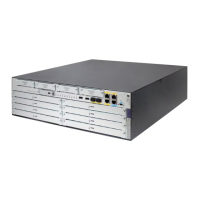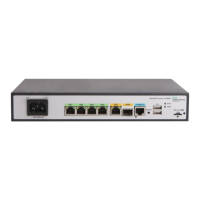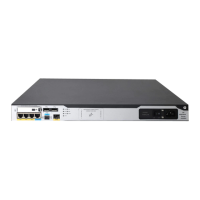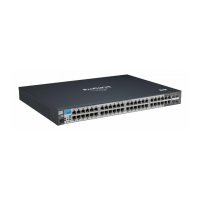418
Selective acknowledgement (SACK) allows the receiver to inform the sender of all segments that
have arrived successfully. The sender needs to retransmit only the segments that have been lost.
DRE
DRE reduces the size of data transmitted by replacing repeated data blocks with shorter indexes. A
WAAS device synchronizes its data dictionary to its peer devices. A data dictionary stores mappings
between repeated data blocks and indexes.
Replacing repeated data blocks with indexes is called DRE compression. Replacing indexes with
repeated data blocks is called DRE decompression.
DRE compression process
DRE compresses data in the following process:
1. The sending WAAS device caches TCP data and sends a large data block to the DRE module.
2. The DRE module divides the large data block into non-overlapping data blocks.
{ For a repeated data block, the DRE module performs the following operations:
− Replaces it with its index and creates an MD5 digest for the data block.
− Sends the index and MD5 digest to the peer.
{ For a non-repeated data block, the DRE module performs the following operations:
− Creates an index for the data block and adds them to the local data dictionary.
− Creates an MD5 digest for the data block and sends the data block, index, and MD5
digest to the peer.
WAAS uses the sliding window technology to segment data and detect data redundancy. This
technology has the following advantages:
• High calculation speed.
• Effective repeated data block detection—It uses a fixed-size window to compare the original
data with data blocks in the dictionary byte by byte.
DRE decompression process
DRE decompresses data in the following process:
1. The receiving WAAS device reconstructs the original data.
{ For an index, the device replaces the index with its data block after querying the data
dictionary.
If the query fails, the decompression fails, and the receiving WAAS device waits for the peer
to retransmit the data.
{ For an index and a data block, the device creates an entry for them and adds the entry to the
local data dictionary.
2. The receiving WAAS device calculates an MD5 digest for the original data and compares the
calculated MD5 digest with the MD5 digest in the packet.
{ If the two MD5 digests are the same, the decompression succeeds.
{ If the two MD5 digests are different, the decompression fails, and the receiving WAAS
device waits for the peer to retransmit the data.
LZ compression
LZ compression is a lossless compression algorithm that uses a compression dictionary to replace
repeated data in the same message. The compression dictionary is carried in the compression result.
The sending device uses the sliding window technology to detect repeated data.
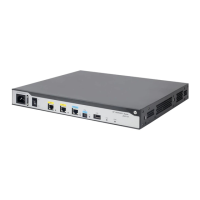
